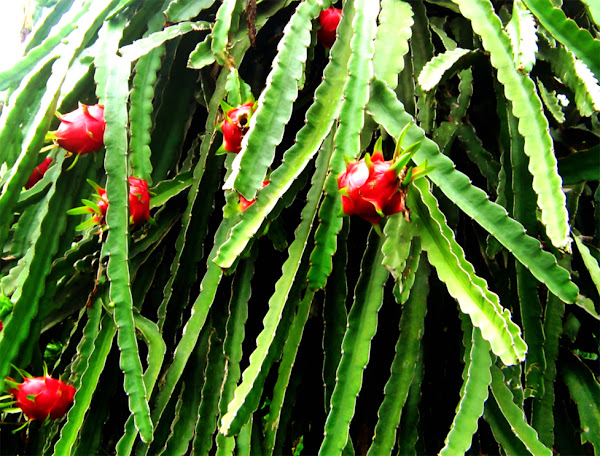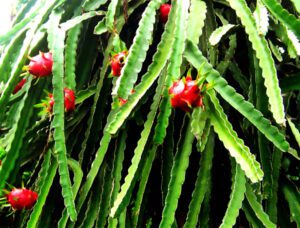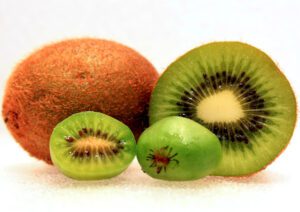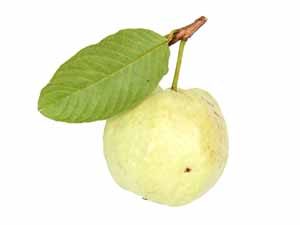Commercial dragon fruit farming is relatively a new business idea. But it’s popularity is increasing gradually. It is a very nutritious fruit and generally sold at very high price in the market.
The dragon fruit is also known by some other names in different parts around the world. It is also known as pitaya, pitahaya, strawberry pear etc.
A pitaya is actually the fruit of several different cactus species indigenous to the Americas. Pitaya usually refers to fruit of the genus Stenocereus, while pitahaya or dragon fruit refers to fruit of the genus Hylocereus, both in the family Cactaceae.
Currently, the dragon fruit farming is done in Southeast Asia, Australia, the Caribbean, in the United States, Mesoamerica and throughout tropical and subtropical regions of the world.
In some areas the dragon fruit plant is treated as an ornamental plant, and also as fruit producing plant. The fruit is generally consumed as a fresh fruit or can be used in jams, jelly production, fruit juice, wine and ice creams. The fruit is also popular for using in face packs.
The fruit’s texture is sometimes likened to that of the kiwifruit because of its black, crunchy seeds. The seed oil contains the fatty acids, linoleic acid and linolenic acid.
Dragon fruit is used to flavor and color juices and alcoholic beverages, such as “Dragon’s Blood Punch” and the “Dragotini”. The flowers can be eaten or steeped as tea.[1]
The red and purple colors of Hylocereus fruits are due to betacyanins, a family of pigments that includes betanin, the same substance that gives beets, Swiss chard, and amaranth their red color.
How to Start Dragon Fruit Farming?
Starting commercial dragon fruit farming will be relatively easy. So, you will be able to start this business if you have prior experience or training.
Caring the dragon fruit plants and other management are very easy, as compared to other crops.

The dragon fruit plants can be grown well in almost all types of environment and soil types. The plants just require fertile soil with the availability of full sun.
You can start this business in your area if you can market the fruits easily within your area. Here we are trying to describe more information about starting and operating a successful dragon fruit farming business from planting, caring to harvesting and marketing.
Step 1. Select Good Location
First of all, you have to select a very good location for growing dragon fruit plants. It will be better if the selected land become fertile and it has access to full sun.
The dragon fruit plants generally grow well in almost all types of soil. Soil with pH range between 5.5 and 7 is considered good for dragon fruit farming.
The plants can be grown well in wide range of soil type from sandy loam to clay. Just ensure that the soil is fertile with good drainage system.
Step 2. Prepare the Soil
Prepare the land perfectly before planting the dragon fruit plants. Plough the land till soil achieves fine tilth and it become weed free. And add as much organic fertilizers as you can into the soil.
Step 3. Climate Requirement For Dragon Fruit Farming
The dragon fruit plants can survive in poor soil conditions and temperature variations. But tropical climatic regions are considered best for it’s growing.
The dragon fruit plants generally require minimum annual rainfall of 50 cm and temperature about 20°C to 30°C. Too much of sunlight is not good for growing this plant. And shading is required for better yield in the high sunlight areas.
Step 4. Choose A Good Variety
There are several varieties of dragon fruit available that are grown and popular. Some common and famous varieties are:
Hylocereus megalanthus: This variety is native to South America and is characterized by it’s white flesh with yellow skin.
Hylocereus costaricencis: This variety is known as Costa Rican Pitaya as it is native to Costa Rica. It is known for it’s violet red flesh and pink skin. The fruit is magenta and the seeds are pear-shaped.
Hylocereus polyrhizus: This variety is native to Mexico, but it is now grown in many countries. It is also known as Red Pitaya and it is recognized by it’s red flesh with it’s pink skin.
Hylocereus undatus: This variety is also known as Pitahaya. It has a white flesh with pink skin. The fruit is 6 to 12 cm in length and 4 to 9 cm in thickness with edible black seeds.
You can choose any variety depending on it’s availability in your area. You can consult with existing farmers in your area for having better idea.
Step 5. Purchase Seeds or Cuttings
The dragon fruit plants can be grown either from seeds or from cuttings. Purchase cuttings or seeds depending on the availability in your area.
Step 6. Planting
There are actually two methods of growing the dragon fruit plants. The first one is the use of seeds, and the second one is using a cutting from the plant sampling.
The seeds generally take time of 3 years before the plant is large enough to be used. So most of the farmers generally opt for the cutting method.
The length of the sapling should be 20 cm and it should be cut from the mother plant and left in shade for 5 to 7 days before being planted in the field.
Depending on the support used (either vertical or horizontal), the planted distance vary. In horizontal support, the distance is almost 50 cm. But in vertical support, the distance between the plants should be between 2 and 3 meters.
The vertical support should be between 1 to 1.20 meter high while the horizontal support should be between 1.40 to 1.60 meter for appropriate growth.
Step 7. Caring
The dragon fruit plants generally require less caring and other maintenance. Here we are shortly describing about the caring process of dragon fruit farming.
Fertilizing
You should apply as much organic fertilizers as you can while preparing the soil. The fertilizers used should be 20-kilogram organic fertilizers 0.5 kilograms super phosphate and 1kg of NPK16-16-8 should be used per 50 postings before the actual plantings of dragon fruit plants. During the plantation stage, 50 grams of Urea combined with 50 grams of phosphate should be used three times a year during the first year.
Watering
The dragon fruit plants generally require less water. So, light watering once a week is recommended. And drip irrigation should be used for better efficiency.
Mulching
Mulching play a very important role in retaining moisture into the soil and also controlling weeds. You can use organic materials for using as mulching.
Controlling Weeds
Weeds consume nutrients from the soil. So, it’s very important to remove the weeds from your field.
Training the Plants
The plants should be supported by concrete or wooden columns to get the proper up right growth and development of the plant. Immature plant stems are required to tie with these columns. Lateral shoots should be limited and 2 to 3 main stems should be allowed to grow.
Step 8. Pests and Diseases
There are no pests and diseases found or reported in dragon fruit farming.
Step 9. Harvesting
The dragon fruit plants start bearing fruits in the first year. The plants generally start flowering in May to June month and bears fruits from August to December month.
The fruits become ready for harvesting after 1 month of flowering. Fruiting time continues till December. And picking up the fruits can be done up to 6 times within this period.
Identifying fruit harvesting stage is very simple as immature fruit color is in bright green color and will turn into red once it is ripened.
Exact time for harvesting is after 3 to 4 days of color change. But in case of exporting, the fruits should be harvested 1 day after color change. You can use either sickle or hand to pick the fruits.
Yield
Exact yield depends on numerous factors. But on average, you can expect average yield of 5 to 6 tonnes per acre.
Step 10. Marketing
Marketing dragon fruits is very easy and simple. You can easily sell the fruits in your local market. Although, you can target other nearest towns for selling your products. The dragon fruits have good demand and value in the market.
These are the common steps and ways for starting and operating a successful dragon fruit farming business. Hope this guide has helped you! Good luck and may God bless you!






